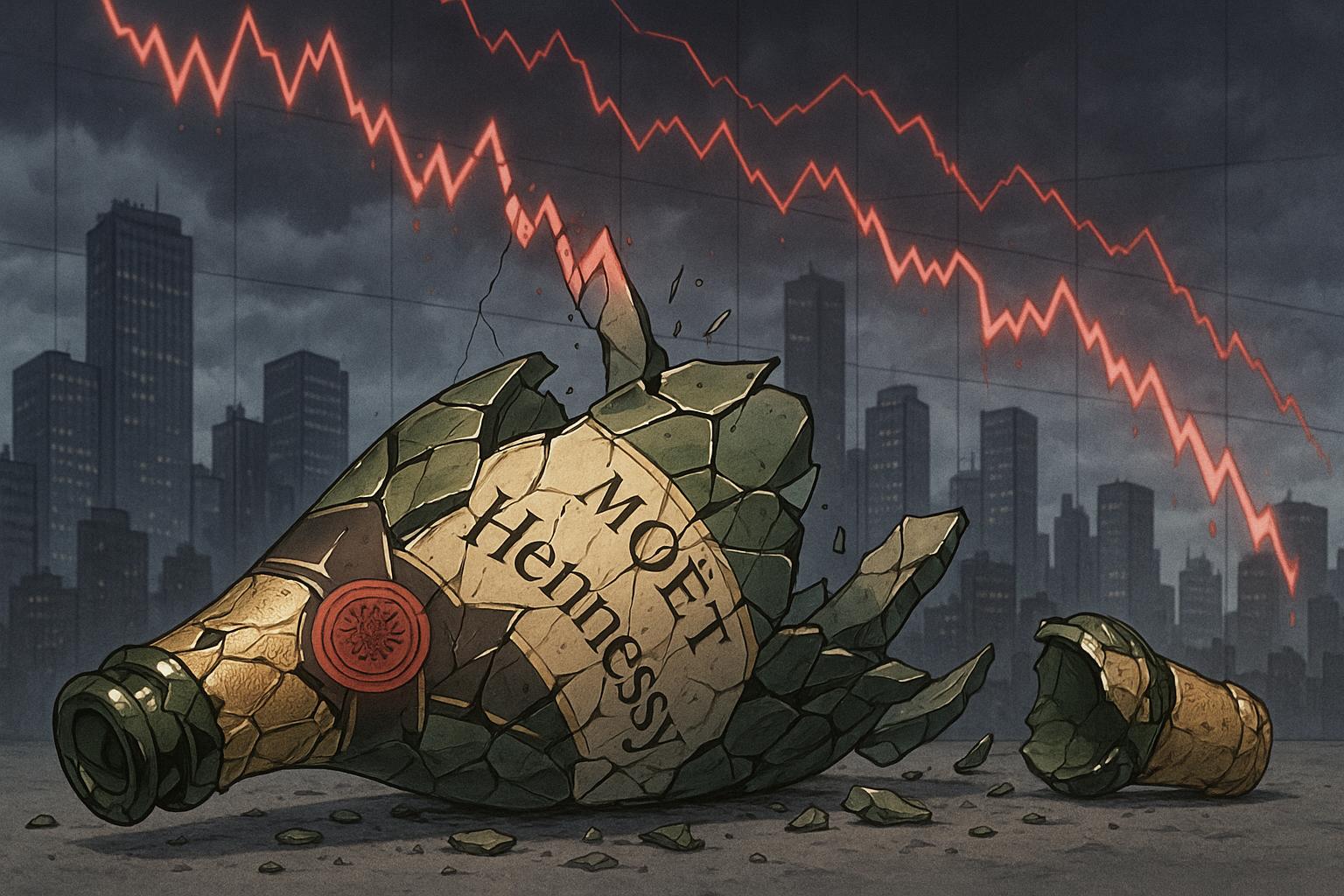The renowned champagne maker Moët Hennessy is currently grappling with a significant financial crisis, a stark contrast to its historical standing as a cornerstone of the luxury spirits market. This downturn was underscored by the announcement of a staggering loss of €1.5 billion (approximately $1.68 billion) last year, as reported by the Financial Times. In a concerning trend, the company's sales dropped 9 percent in the first quarter compared to the previous year, highlighting a critical vulnerability within what was once considered a robust revenue-generating division for parent company LVMH.
The crisis can be traced back to several strategic missteps, particularly under the leadership of former CEO Philippe Schaus. His aggressive price increases—averaging over a third since 2019—were intended to boost profits but inadvertently alienated consumers, leading to a losses trajectory that saw profits plummet from generating over €1 billion in cash in 2019 to burning through cash reserves in 2024. As stated in another analysis, profit margins have contracted to around 23%, raising alarm among stakeholders about the sustainability of such pricing strategies.
The challenges faced by Moët Hennessy are compounded by a global downturn in alcohol consumption, exacerbated by the lingering effects of the pandemic. As the market adjusts, the company’s attempts to pivot towards direct-to-consumer sales have largely faltered, losing millions annually. While Schaus's initiatives included opening Hennessy retail outlets in China and a Veuve Clicquot store in a prominent Paris department store, these ventures failed to deliver expected returns.
New leadership has recently taken the reins, with CEO Jean-Jacques Guiony prioritising a transformative approach in response to the crisis. Guiony articulated a need to recalibrate the company’s ambitions, admitting that the expansive growth strategies pursued previously were misguided in today's economic climate. Notably, a plan to cut approximately 1,200 jobs—around 13 percent of the workforce—is in motion as part of broader cost-cutting efforts. This marks a significant shift in strategy, focusing on consolidating efforts around major brands such as Moët & Chandon and Hennessy while reassessing less profitable segments.
Complicating matters further for Moët Hennessy is the impact of geopolitical factors, notably escalating trade tensions between the U.S. and the EU. Tariffs on French wines and spirits are straining profitability, particularly affecting sales in critical markets such as the U.S. and China. This has raised concern regarding future growth prospects and prompted scrutiny of the company’s brand portfolio and operational efficiency.
Insiders have also indicated that Schaus's acquisition spree—spending around €2 billion on various brands since 2021, including a stake in Jay-Z's champagne brand Armand de Brignac—has added complexity without generating the anticipated returns. Moët Hennessy now seems more cautious about its growth strategies, with plans to scale back on international expansions and smaller labels, a shift emphasised by Guiony's leadership team.
Analysts remain divided over the future of Moët Hennessy, with some suggesting a potential divestment could unlock value for LVMH shareholders. However, Bernard Arnault, LVMH’s chairman, has dismissed the idea of separating the division, indicating a commitment to reinvigorating the brand from within. As Alexandre Arnault, LVMH’s deputy CEO, takes a hands-on role in the management of Moët Hennessy, stakeholders are watching closely to see whether these strategic adjustments can stem further losses and revive consumer interest in its iconic products.
While the current climate presents serious challenges for Moët Hennessy, new initiatives and leadership strategies aim to transform the division's fortunes. The coming years will be critical as the brand strives to adapt to an evolving market landscape and consumer preferences, all while navigating the complexities of its premium offerings in a competitive global marketplace.
Reference Map
- Paragraphs 1, 2, 3, 4, 5, 6
- Paragraphs 1, 2, 4, 5
- Paragraphs 3, 5, 7
- Paragraphs 4, 5, 6
- Paragraphs 4, 5, 6
- Paragraphs 2, 3, 6
Source: Noah Wire Services
